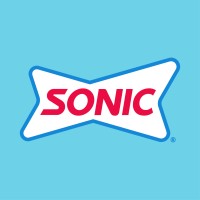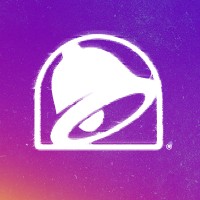
SONIC
SONIC®, America’s Drive-In®, is part of the Inspire Brands family of restaurants. Inspire is a multi-brand restaurant company whose portfolio includes more than 8,300 Arby’s, Buffalo Wild Wings, and SONIC locations worldwide.



SONIC®, America’s Drive-In®, is part of the Inspire Brands family of restaurants. Inspire is a multi-brand restaurant company whose portfolio includes more than 8,300 Arby’s, Buffalo Wild Wings, and SONIC locations worldwide.

Taco Bell was born and raised in California and has been around since 1962. We went from selling everyone’s favorite Crunchy Tacos on the West Coast to a global brand with 8,200+ restaurants, 350 franchise organizations, that serve 42+ million fans each week around the globe. We’re not only the largest Mexican-inspired quick service brand (QSR) in the world, we’re also part of the biggest restaurant group in the world: Yum! Brands. Much of our fan love and authentic connection with our communities are rooted in being rebels with a cause. From ensuring we use high quality, sustainable ingredients to elevating restaurant technology in ways that hasn’t been done before… we will continue to be inclusive, bold, challenge the status quo and push industry boundaries. We’re a company that celebrates and advocates for different, has bold self-expression, strives for a better future, and brings the fun while we’re at it. We fuel our culture with real people who bring unique experiences. We inspire and enable our teams and the world to Live Más. At Taco Bell, we’re Cultural Rebels.
Security & Compliance Standards Overview












No incidents recorded for SONIC in 2025.
No incidents recorded for Taco Bell in 2025.
SONIC cyber incidents detection timeline including parent company and subsidiaries
Taco Bell cyber incidents detection timeline including parent company and subsidiaries
Last 3 Security & Risk Events by Company
Angular is a development platform for building mobile and desktop web applications using TypeScript/JavaScript and other languages. Prior to versions 19.2.16, 20.3.14, and 21.0.1, there is a XSRF token leakage via protocol-relative URLs in angular HTTP clients. The vulnerability is a Credential Leak by App Logic that leads to the unauthorized disclosure of the Cross-Site Request Forgery (XSRF) token to an attacker-controlled domain. Angular's HttpClient has a built-in XSRF protection mechanism that works by checking if a request URL starts with a protocol (http:// or https://) to determine if it is cross-origin. If the URL starts with protocol-relative URL (//), it is incorrectly treated as a same-origin request, and the XSRF token is automatically added to the X-XSRF-TOKEN header. This issue has been patched in versions 19.2.16, 20.3.14, and 21.0.1. A workaround for this issue involves avoiding using protocol-relative URLs (URLs starting with //) in HttpClient requests. All backend communication URLs should be hardcoded as relative paths (starting with a single /) or fully qualified, trusted absolute URLs.
Forge (also called `node-forge`) is a native implementation of Transport Layer Security in JavaScript. An Uncontrolled Recursion vulnerability in node-forge versions 1.3.1 and below enables remote, unauthenticated attackers to craft deep ASN.1 structures that trigger unbounded recursive parsing. This leads to a Denial-of-Service (DoS) via stack exhaustion when parsing untrusted DER inputs. This issue has been patched in version 1.3.2.
Forge (also called `node-forge`) is a native implementation of Transport Layer Security in JavaScript. An Integer Overflow vulnerability in node-forge versions 1.3.1 and below enables remote, unauthenticated attackers to craft ASN.1 structures containing OIDs with oversized arcs. These arcs may be decoded as smaller, trusted OIDs due to 32-bit bitwise truncation, enabling the bypass of downstream OID-based security decisions. This issue has been patched in version 1.3.2.
Suricata is a network IDS, IPS and NSM engine developed by the OISF (Open Information Security Foundation) and the Suricata community. Prior to versions 7.0.13 and 8.0.2, working with large buffers in Lua scripts can lead to a stack overflow. Users of Lua rules and output scripts may be affected when working with large buffers. This includes a rule passing a large buffer to a Lua script. This issue has been patched in versions 7.0.13 and 8.0.2. A workaround for this issue involves disabling Lua rules and output scripts, or making sure limits, such as stream.depth.reassembly and HTTP response body limits (response-body-limit), are set to less than half the stack size.
Suricata is a network IDS, IPS and NSM engine developed by the OISF (Open Information Security Foundation) and the Suricata community. In versions from 8.0.0 to before 8.0.2, a NULL dereference can occur when the entropy keyword is used in conjunction with base64_data. This issue has been patched in version 8.0.2. A workaround involves disabling rules that use entropy in conjunction with base64_data.